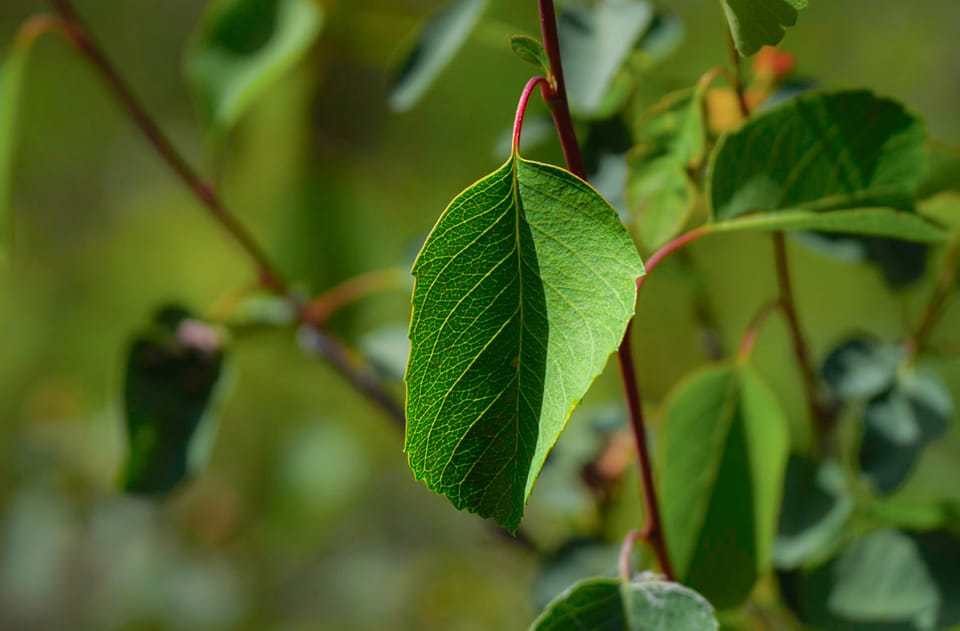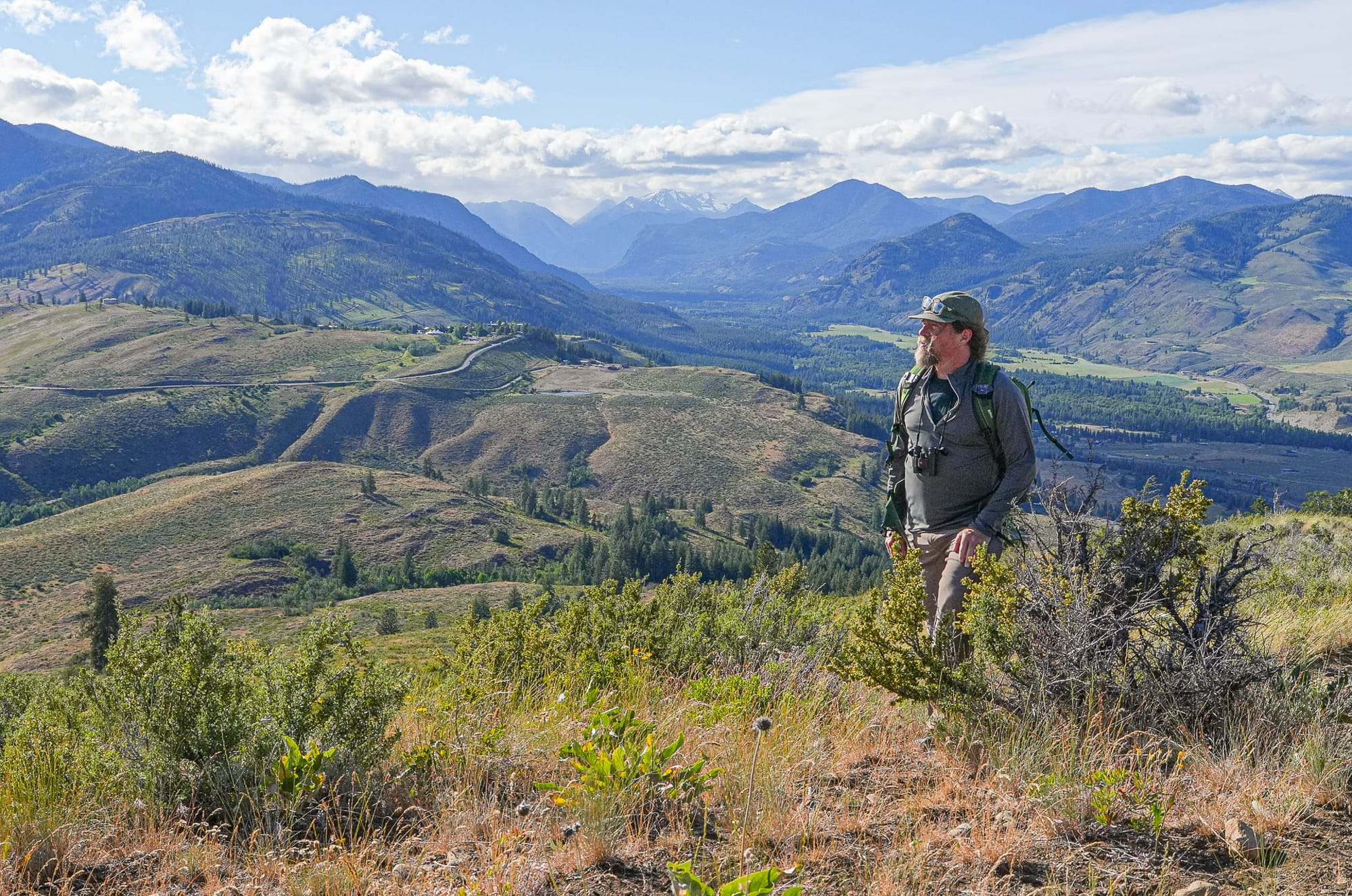A Single Leaf

I recently found myself contemplating a single serviceberry leaf, and it occurred to me that this example might be a way to share with you how my mind works—and, by extension, how the mind of a naturalist works.
You see, there's a lot going on in my mind when I look at nature and it's due to the fact that I've spent tens of thousands of hours studying every aspect of the natural world: accumulating countless hours of personal observations, alongside a vast reading of field guides, textbooks, and scientific literature; and then mastering these topics in order to share them through my writing and teaching.
What this looks like outwardly is that when I'm in nature I walk quietly, with many long pauses. And, at the moment I found myself captivated by this single leaf, all those years of study and research rose to the surface in a flash.
I first found myself drawn to the play of shadow and light on this leaf, and how this accentuated the leaf's form. This led me to thinking about the physics of light, while contemplating the structures of leaf blades and stems, along with the reasons why some leaves have toothed edges.
I thought about plant pigments and colors, about the organization of components inside plant cells and the chemical pathways going on there, and about how all these elements feed into a complex photosynthetic web with microscopic changes happening as light and shadows moved across the leaf.
I thought about waxes on the leaf's surface, broken up by millions of pores breathing in and out as a living membrane. I thought about those pores releasing water while also guarding against invasion by fungal spores and bacteria living on the leaf's surface. And how spores and bacteria will patiently wait on a leaf's surface until its defenses are reduced, or the leaf starts to die, before activating and racing to eat the leaf.
This led me to marvel at the ways that photosynthetic pathways capture sunlight and convert it into stored energy, then funnel these sugars into a clearly outlined network of veins that are transporting sugars to storage areas in the plant's stems and roots. On this healthy leaf there was no sign of insect damage, but I was still aware that a host of leaf-eating insects and mammals are always looking to consume this leaf's stored energy.
Seeing this leaf also reminded me of the plant's common and scientific names, the etymology of these names, and the history of how this plant was named, alongside the history of how the plant is used for food, and the ways its berries sustain communities of birds and small animals. This also had me thinking about the genus and family this plant belongs to, which other plants it's related to, and how this plant fits into a larger evolutionary tree of life.
There were more insights than this, of course, but let me try to explain what was going on in my mind here because all of these levels of awareness were happening at the same moment. Although I'm saying that I "thought" about these associations, no conscious thoughts were occurring. Any thoughts that arose were nothing more than fleeting fragments of unformed ideas.
Instead, all these levels of awareness were happening instantaneously on a cellular level of non-verbal, deep knowing, where I feel these stories in my bones rather than naming them or thinking about them in my head. At the same moment these stories are flowing through me, they are also resonating with each other and stitching together in new and unexpected ways. And, over the years, I've learned to trust that these new connections will reappear spontaneously when I'm writing or teaching people about some other aspect of the natural world—and the magic of these remarkable insights is what I love most about being a naturalist.
I don't want to pretend like this is a unique experience. I suspect it's the same kind of flow that happens for anyone who's invested tens of thousands of hours into any type of art, craft, or specialized field of knowledge. What might be unique is that there aren't many naturalists doing this, so I believe there's value in sharing the flow of a naturalist's mind in hopes that it will inspire other people to see what's possible.

Member discussion